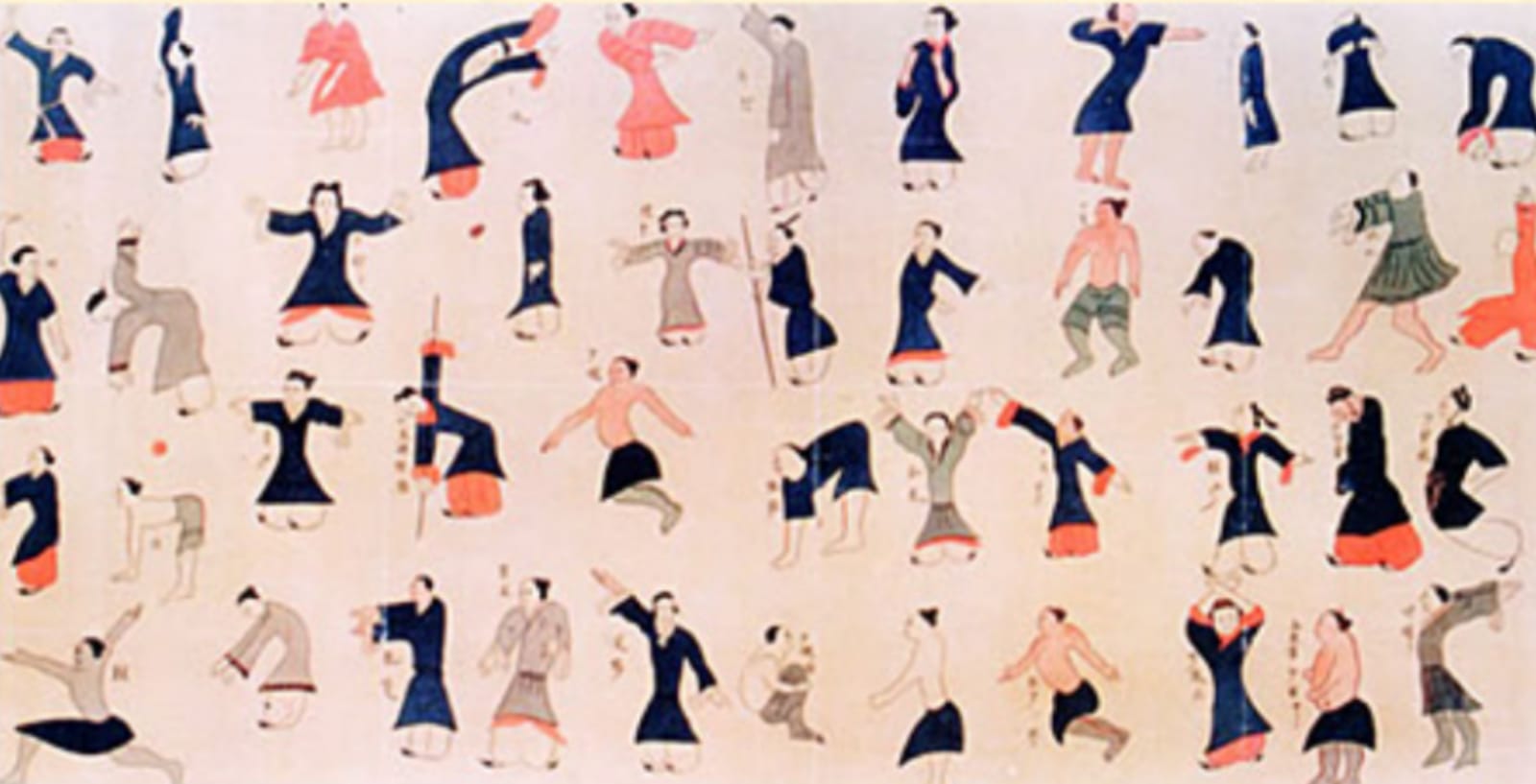This is what my teacher tells us to do in Qi Gong.
I like her words because they remind me to be more easeful, less serious.
That’s right – Qi Gong can be light and even fun and it has helped me immensely over the last five years. Qi Gong reminds of moving with life in “effortless action”, a kind of flow where I move slower, using less effort and meet resistance with more ease.
(I write about stuff like this in my weekly Go Slow Friday Letters – sign up here.)
“When we start to feel the effects of Qi Gong, we begin to know what it is like to be healthy, vibrant and clear. Qi Gong gives us the tools to see, respond and adjust to our experiences so that we can stave off the detrimental effects of fatigue, tension and stress before they become deeper problems.”*
Qi Gong is thought to have originated as a form of “remedy dancing” created for healing and health preservation purposes. (Source)
After my morning Qi Gong practice, I usually feel light and grounded. My hands and feet often tingle with warmth, a sign that my Ki (energy) is moving. Qi Gong, or “energy work” is a way to cultivate Ki and this helps maintain my health.
The first character 氣, qi, means energy, life energy. The second character 功, gong, means ‘work’; so qi gong = energy work.
Practising with lightness and ease allows Ki to flow, helping us cultivate strength and vitality. Moving Ki connects mind and body, people to each other, and humanity to the whole of life.
Introducing the Summertime Qi Gong Series
In Five Element Theory the emotion of summer is joy. This is what I hope you will experience with this easy and accessible introduction to the Shibashi Set One form.

Qi Gong is a truly inclusive practice – if you cannot stand or have mobility difficulties, there are forms that can be enjoyed in a seated position.
Your Qi Gong success tips
- Start small – I introduce only 3 additional moves of the form each week
- Practice daily – decide what time works best for you
- If you get confused, just “wave your arms around with style” and carry on
- Try visualising the movement of Ki within your body using colours, and cues from nature eg sunlight
- Smile!
You can spend a year or so practising one form until it is ‘in your bones’. Sticking with one form for some time gives it space to breath and for you to deepen your experience of the energetic movements stimulated by the movements and visualisations. You’ll never want to miss your daily Qi Gong practice!
Now give this a watch and don’t forget, there’s another three moves in the form coming to you in next week’s Go Slow Friday Letter. Sign up here.
Ready for another three moves? See here for moves 1-6.

Sources:
* Mimi Kuo-Deemer, “Qi gong and the Tai Chi Axis”, 2018
* Featured image source – Manuscript drawing of physical exercises dao-yin (guiding the energy flow) from an ancient tomb of the Han dynasty





